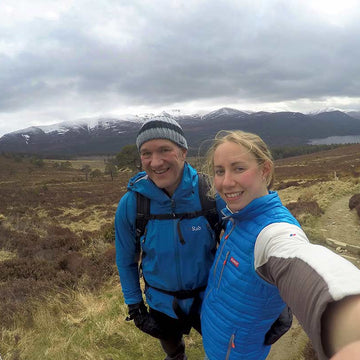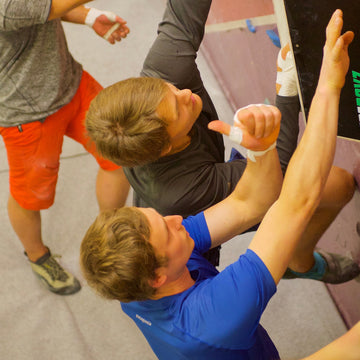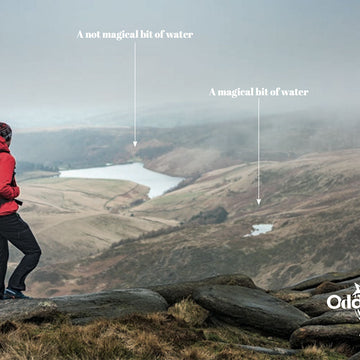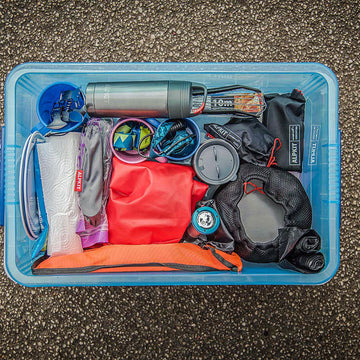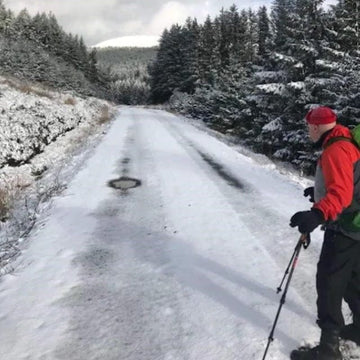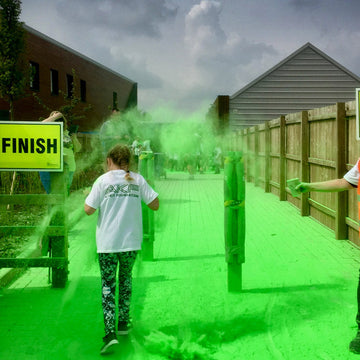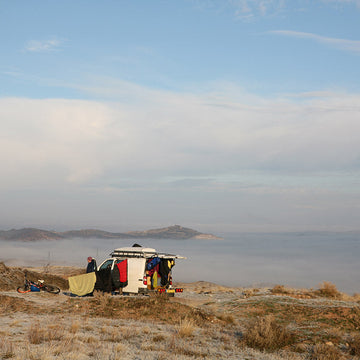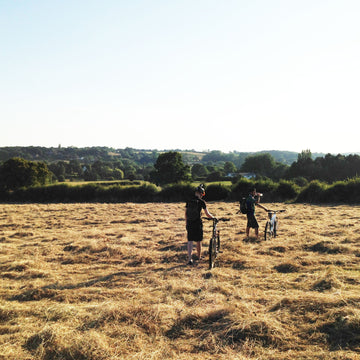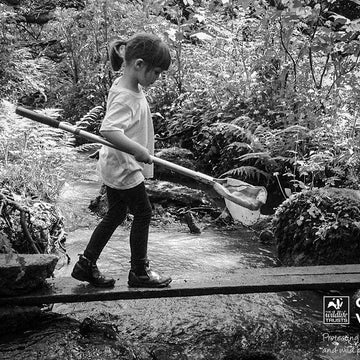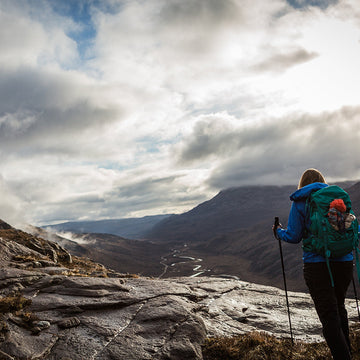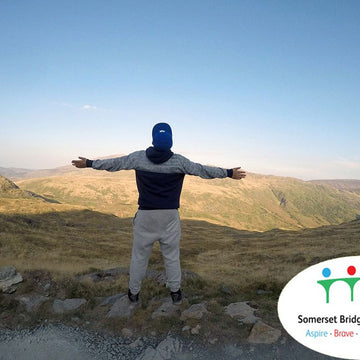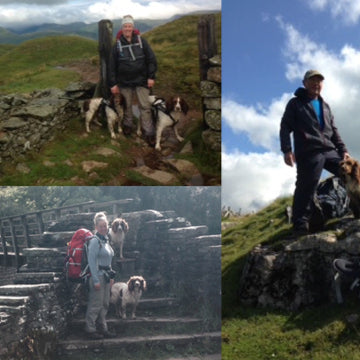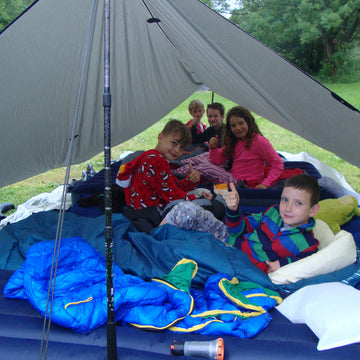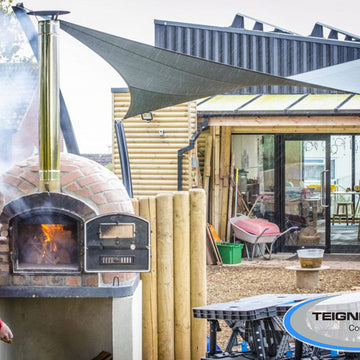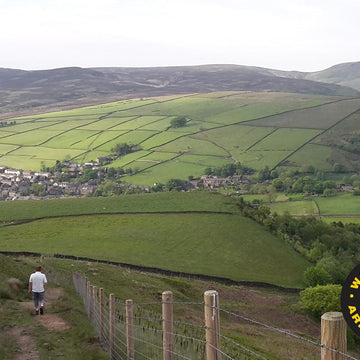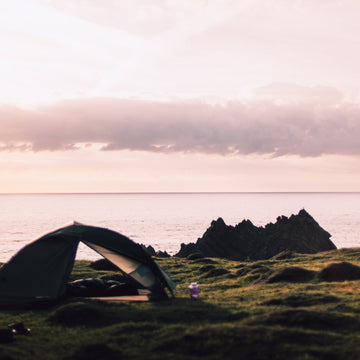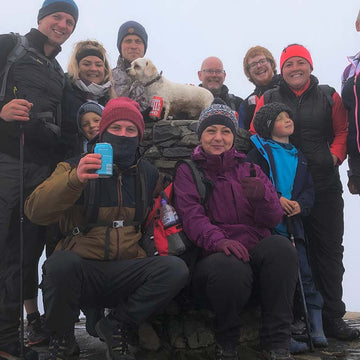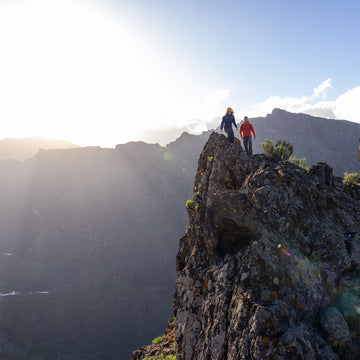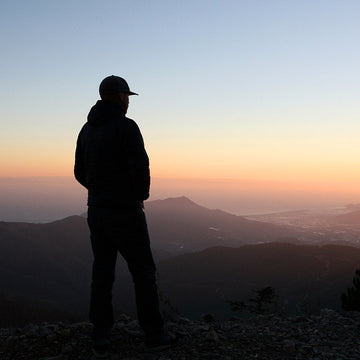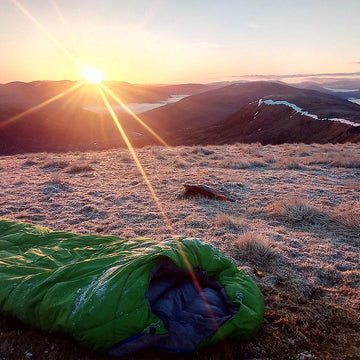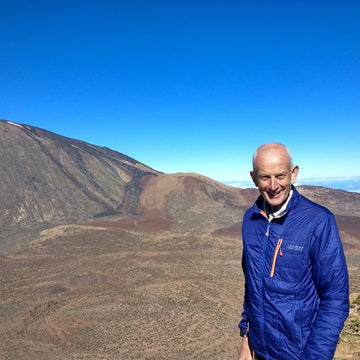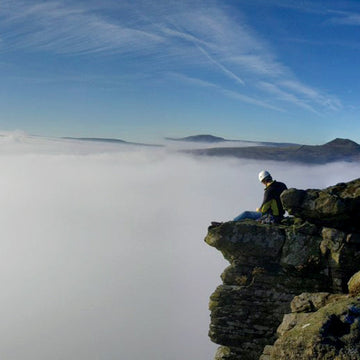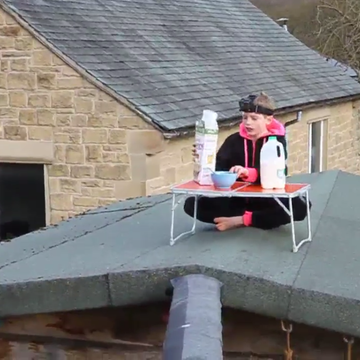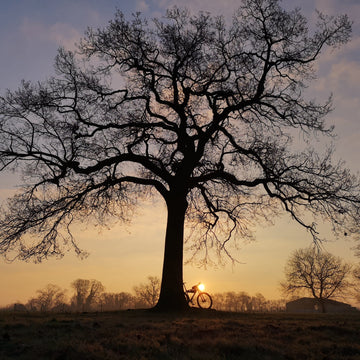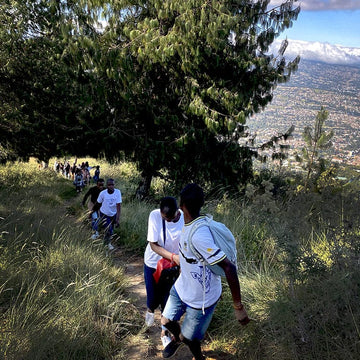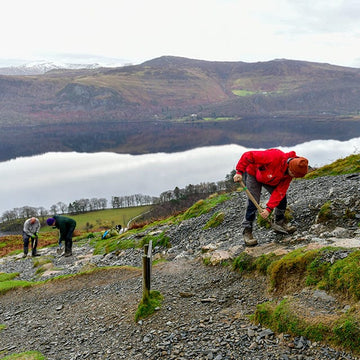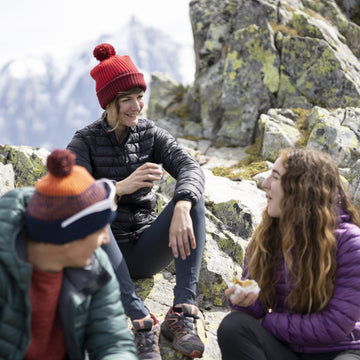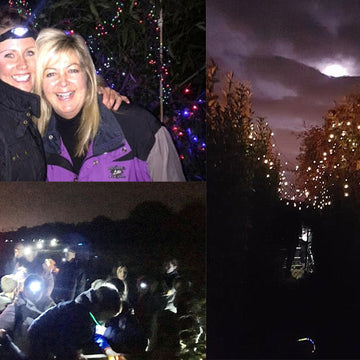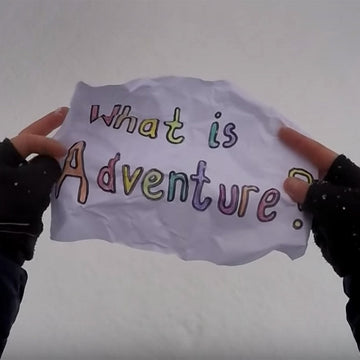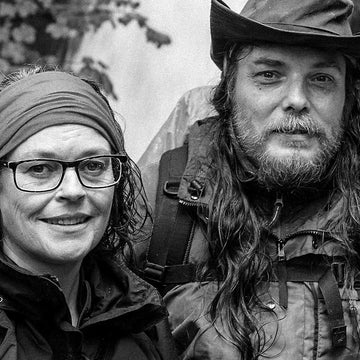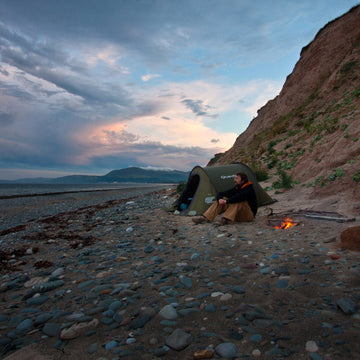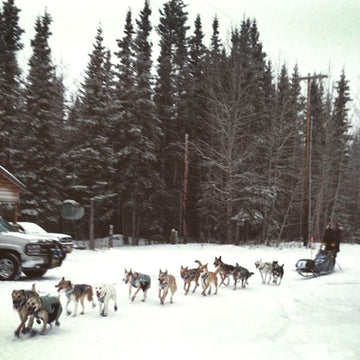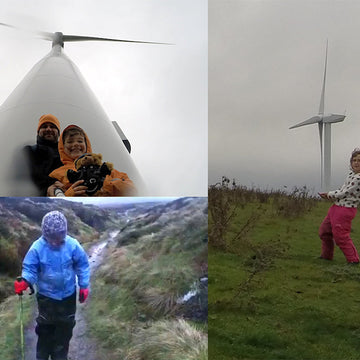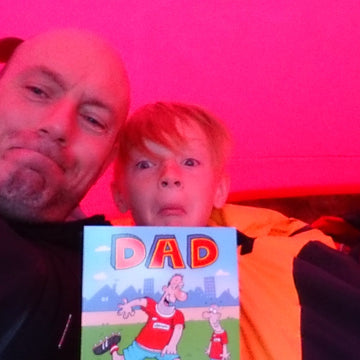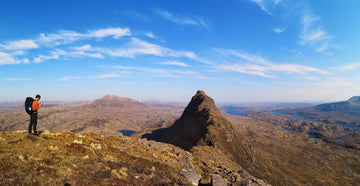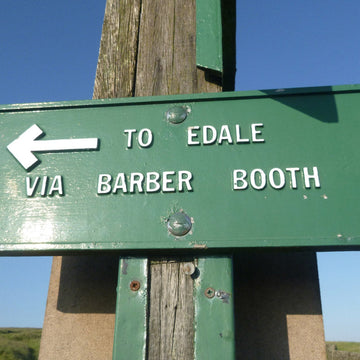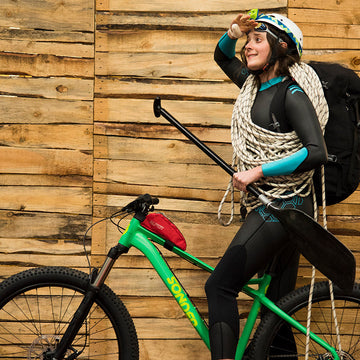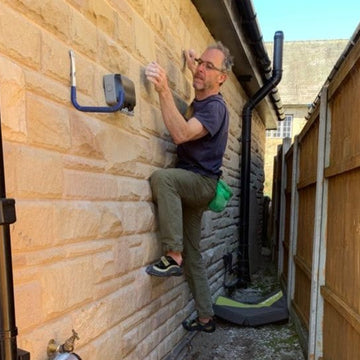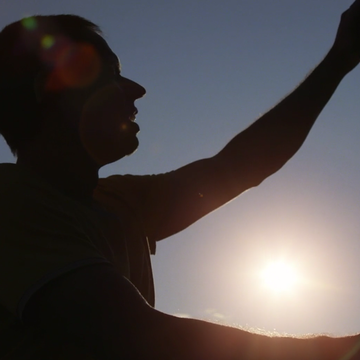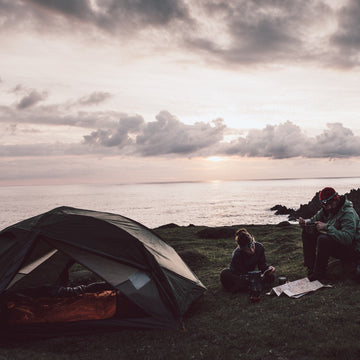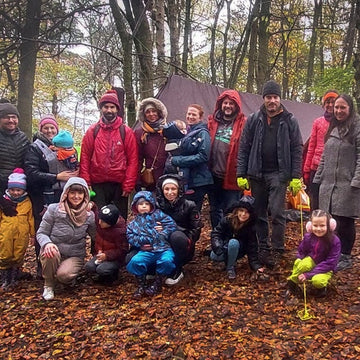
There are 55 hours from 7pm Friday to midnight Sunday. Whether you run, hike, climb, bike, paddle or swim, that stretch of time holds untapped potential for adventure.
The seed of an adventure often starts with a question: "I wonder what's over there?" or "Could I actually make it that far in a weekend?" Look at a map of your surrounding area and notice what catches your eye. That blue line of river you've driven past but never explored. The ridge of hills on the horizon that you've seen a thousand times but never climbed. The coastline you only visit at established beaches.
Great weekend adventures don't need to be extreme. They just need to pull you out of your routine and into a space where you're fully present. Maybe it's cycling between small towns you've never visited, with a night under the stars in between. Perhaps it's paddleboarding as far as you can go in a day, then camping and returning the next. The magic lies in connecting places or experiences in ways most people never consider.

Find someone to share your adventure
Adventures can be shared, or not if you prefer, but getting friends to commit can be challenging. The key is to paint a picture they can't resist. Don't lead with the difficulties—"We'll be hiking for eight hours straight and sleeping on the ground." Instead, highlight the exceptional moments: "Imagine waking up to sunrise over the valley with nobody else around for miles."
Prime them early with inspirational stories from adventurers like Al Humphreys. Al has mastered the art of convincing anyone they have an adventure in them. When the time comes to finally pop the question, the seed with have already germinated and they will feel as if they have suggested the idea themselves.
Be specific about logistics to take away uncertainty. "We'll leave at 7pm Friday, drive for two hours, I have already booked a campsite - it's near a pub, then we will start on Saturday after breakfast. We'll be back by 8pm Sunday, so you'll have time to prep for the week."
Work you friends to find out what they are motivated by and use your findings to tailor the adventure. Some want the physical challenge, others crave the stories they'll tell afterward, while some just need escape from daily pressures.
How to prepare
There's a sweet spot in preparation—enough to keep you safe, not so much that you eliminate all spontaneity. You might already have a Go Box locked and loaded.
Research your route thoroughly and understand where the critical decision points might be. Check multiple weather forecasts before leaving.
Don't lose touch with the broader outcome you want from the trip. "We need to be at checkpoint B by 11am or the trip is ruined!" is a fine way to demotivate your crew. This is especially true if you have kids in your party.
It is easy to get blinkered into thinking you have to follow your best laid plans. Be an empathetic leader and don't be afraid to deploy that plan-b, c and d you have up your sleeve.
Test any equipment you're relying on, especially if it's new or hasn't been used recently. Nothing derails an adventure faster than the growl of an empty stomach after you have discovered your stove doesn't.
Physical preparation matters too. Now, you don't need to be an elite athlete, but some basic conditioning will make the experience more enjoyable. A few longer walks in the weeks before a hiking trip or some extended rides before a cycling adventure can make all the difference.
Making it happen
The hardest part of any adventure is often the departure. It's Friday evening, you've had a long week, Grand Designs and the couch is calling. This is when commitment devices become crucial. Tell everyone you're going, you can do it on our Facebook or Instagram pages if you like. Pack the night before. Arrange to meet companions at a specific time. Make backing out more awkward than just getting started.
There's a special energy to cranking up Dance Anthems and setting off as the working world winds down for the weekend. While boring people head to restaurants or settle in front of televisions, you're slipping into a parallel universe where different rules apply, where time is measured in distance and f=uN.

What kit to take
Equipment for weekend adventures follows one principle: everything should earn its place in your pack. Each item represents weight you'll carry and complexity you'll manage. The minimalist approach isn't about suffering—it's about distilling your needs to their essence, and yes if you achieve that you can take a little bit of luxury.
For clothing, layering remains the fundamental strategy. Multiple thin layers offer more versatility than single thick ones. Look for quick-drying fabrics that retain some warmth when wet.
What type of shelter you choose depends on your comfort with exposure. A full tent offers psychological security and shared communal space but weighs more than a tarp or bivvy bag. Whatever you choose, practice setting it up before you need it in darkness or foul weather.
Of course you could stay in a hostel, hotel or Airbnb. It's your adventure.
Getting through the awkward middle
Every adventure has an "awkward middle"—that point where the initial excitement has worn off but the satisfaction of completion remains distant. Maybe it's Saturday afternoon and your legs are tired, your companions are quieter than they were hours ago, you turn around and they are grey with far away looks and you're questioning your choices.
This is when mental strategies become as important as physical stamina. Break the journey into smaller segments with mini-celebrations. Don't watch the pot, find ways to distract yourself from the slow passing of time, it's a cliche but reminding yourself that the journey is more important than the destination may help you pull through. (It may also get you a paddle to the back of the head).
Sometimes changing the pace helps reset everyone's energy. Stop for fifteen minutes at an interesting spot. Share food, even that last Malteaser. Tell stories. The middle isn't something to push through—it's the bulk of your adventure and deserves to be experienced fully.
Finally the awkward middle will pass and you will be on the homeward straight.

Surviving the night
The night brings both challenge and magic to weekend adventures.
Sleep
A wild camp can be the defining point of your adventure, make it the purpose of your trip and milk it for everything its worth.
If you're camping or bivouacking, prioritise getting your shelter sorted while there's still light. Even in summer, temperatures can drop dramatically after sunset, so having your sleep system ready before you need it is crucial.
Elevate your camp to be a feature of your adventure rather than an afterthought. Plan where you are going to stay, where you are going to resupply, the views you are going to enjoy.
Give yourself time to enjoy wild camping and leave no trace.
Pushing through
If crushing the miles is more important, you might choose to have a temporary respite before pushing on.
If you are pushing through learn to embrace the darkness rather than fighting it. Let your eyes adjust instead of relying constantly on headlamps, but do make sure you have lights that are suitable for your activity with power to last.
Even in late spring / early summer the nights can feel long. Keep going and enjoy the experience.
To keep moving through the night and experience day break is one of the most powerful experiences I have had on any adventure.
Nutritional Joe
What you eat affects how you feel. Your body becomes a simpler machine with clearer feedback. You need calories that your system can process while moving, and enough variety to keep you wanting to eat when your appetite has been suppressed by exertion.
It is an odd feeling to be exhausted, facing a shelf full of food with zero appetite for anything on display.
Real food often works better than engineered products. Sandwiches with good bread and fillings that won't spoil provide sustained energy. Nuts, chocolate, dried fruits combine well for trail snacks. Hard cheeses, cured meats, and tortillas make impromptu meals anywhere.
Water strategy is paramount—both carrying enough and knowing where to refill. Dehydration doesn't just make you thirsty; it clouds thinking and dampens enjoyment before you even recognise what's happening.

How to stay motivated
Connect the demands of your adventure with the rewards. Why are you doing this? What drew you out here? Sometimes it's about proving something to yourself. Other times it's about experiencing the world more directly, stepping out of observer mode into full participant.
It doesn't even need to be a big thing. The promise of a small woven badge has been enough to trick my mind and get me around the Barebones 300
When motivation flags, shift your focus. If looking ahead to the distant goal seems overwhelming, narrow your attention to the immediate surroundings. Find one beautiful, or interesting thing every fifteen minutes. Just try to ignore annoying things as they will make you feel worst.
Music and audio can help during solo sections or particularly grueling stretches, whatever helps you get through.

How to stay sane
Mental wellbeing on adventures requires accepting some discomfort without being consumed by it. Yes, your feet hurt. Yes, that uphill seems endless. Acknowledge these realities without turning them into narratives about suffering or punishment.
Find humour in the inevitable mishaps. The wrong turn that adds miles. The forgotten spoon that forces improvisation. The rain that starts precisely when you're farthest from shelter. These hilarious moments become the stories you'll tell afterward.
Adventures compress emotional experiences. Let's think about that in advance so it doesn't catch you unawares. You might feel frustration, elation, doubt, and accomplishment within a single hour. Let these emotions flow through rather than defining your entire experience.

Knowing when to quit
The hardest wisdom in adventure is knowing when to turn back or change plans. This isn't failure—it's good judgment. Before departing, establish clear conditions that would trigger reconsideration: weather thresholds, physical symptoms, time constraints.
Listen to intuition about risks—that feeling that something isn't right often precedes your conscious assessment of dangers. Distinguish between discomfort (which you can usually push through) and actual hazard (which demands respect).
Remember that the challenge will remain. The trail, the mountain, the river will still be there for another attempt - don't worry we will remind you same time next year!
The true adventure lies not in reaching arbitrary goals but in deepening your relationship with places, the people you are sharing your adventure with and your own capabilities.
Emergency plans
Even simple weekend adventures benefit from some what-if thinking. Always tell someone reliable where you're going and when you expect to return. Know how to call for help in your area, a phone service can't be assumed everywhere.
Carry essentials that address the most likely problems: first aid supplies appropriate to your activity, methods to make water safe, extra food, basic shelter even on day trips. These aren't just for worst-case scenarios—they're tools that allow you to make better choices knowing you have backup options.
Understanding your location on maps (both digital and paper) provides security beyond navigation. It means knowing how far to the nearest road, alternate routes if needed, and where other people might be found.
Essential Gear Guide
Your gear choices can make or break a weekend adventure. Here's a curated selection of lightweight, versatile equipment that strikes the perfect balance between comfort and portability, exactly what you need for those precious 55 hours in the wild.

Shelter: Ultra 1 Lightweight Tent
When you're carrying everything on your back, every gram matters. At just 900g (2lbs), the Ultra 1 backpacking tent offers remarkable comfort-to-weight ratio with its carbon fibre poles and waterproof siliconised nylon flysheet. The side entry with spacious porch gives you room to store wet gear while keeping your sleeping area dry, and there's enough headroom to sit up comfortably. The freestanding design means quick setup when you arrive at camp, and the inner-first pitch gives you options in varying weather conditions.
Sleep System: Cloud Base & Cloud Peak

Cloud Base Inflatable Sleeping Mat
Nothing sabotages adventure enthusiasm faster than a poor night's sleep. The Cloud Base inflatable camping mat weighs just 420g yet provides 5cm of cushioned comfort between you and the uneven ground. Diamond-shaped air chambers create a network of supportive "pillows," while the one-way valve makes inflation quick after a long day on the move. Made from 95% recycled ripstop nylon, it's durable enough for rough terrain yet packs down small.

Cloud Peak 200 Sleeping Bag
The Cloud Peak synthetic sleeping bag strikes the perfect balance for late spring to late summer conditions with its 2-season rating and 8°C comfort rating. The Thermolite® Ecomade synthetic fill (made with 35% recycled materials) maintains its insulating properties even when damp—essential for unpredictable weekend weather. The slightly tapered mummy shape conserves body heat without feeling restrictive, and the full-length zip baffle keeps drafts at bay. Unlike more delicate down options, this bag can withstand repeated compression and washing, making it ideal for regular weekend adventurers.
Cooking System: Brukit & MytiMug

Brukit All-in-One Stove
When you're eager to get moving in the morning or need to refuel quickly, the 585g Brukit integrated cooking system delivers with minimal fuss. Its built-in heat exchanger and windshield maximize efficiency, while the piezo ignitor eliminates matchstick fumbling. Everything nests together for transport, including space for a fuel canister, and the neoprene cozy means no burned fingers when handling. Perfect for quick brews, soups, or one-pot meals when you'd rather be exploring than cooking.

MytiMug Titanium Cooking Mug
Sometimes simplicity is best. The 90g titanium cooking mug offers 400ml capacity—enough to boil water for most dehydrated meals or your essential morning coffee. Made with 30% recycled titanium, it's incredibly durable and won't impart metallic tastes to your beverages. The smart design allows you to store the [Kraku compact camping stove](/products/kraku "Kraku ultralight titanium camping stove) inside, creating an ultralight cook system weighing just 135g (excluding fuel).

Illumination: Kula LED Headtorch
As daylight fades on your adventure, the high powered and reliable 92g Kula headtorch provides 550 lumens of adjustable illumination. The 180° beam angle adjustment lets you direct light precisely where needed, whether you're navigating a trail in darkness or searching through your pack. With four brightness levels plus specialized modes (red, warm white, boost, and flash), you can optimize battery life for your needs. The 1500mAh battery delivers up to 80 hours on eco mode, and the USB-C rechargeable design means no disposable batteries to carry (or forget).
Packing philosophy
Remember that the best kit for 55-hour adventures isn't necessarily the most expensive or technical, it's what enables your experience without becoming a burden. Choose gear that serves multiple purposes, packs efficiently, and will stand up to the conditions you expect to face. Every item should earn its place in your pack by contributing meaningfully to your comfort, safety, or enjoyment.
The beauty of the 55-hour weekend adventure is that it doesn't require elaborate logistics or exotic destinations. The thrill can be found just beyond where you usually go, in terrain accessible but untapped. These micro-adventures offer the essential elements of longer journeys—challenge, discovery, perspective without requiring extensive time away from responsibilities.
So come Friday at 7pm, what will you choose? The familiar comfort of home or the trail that leads somewhere you've never been? Your 55 hours are waiting.
